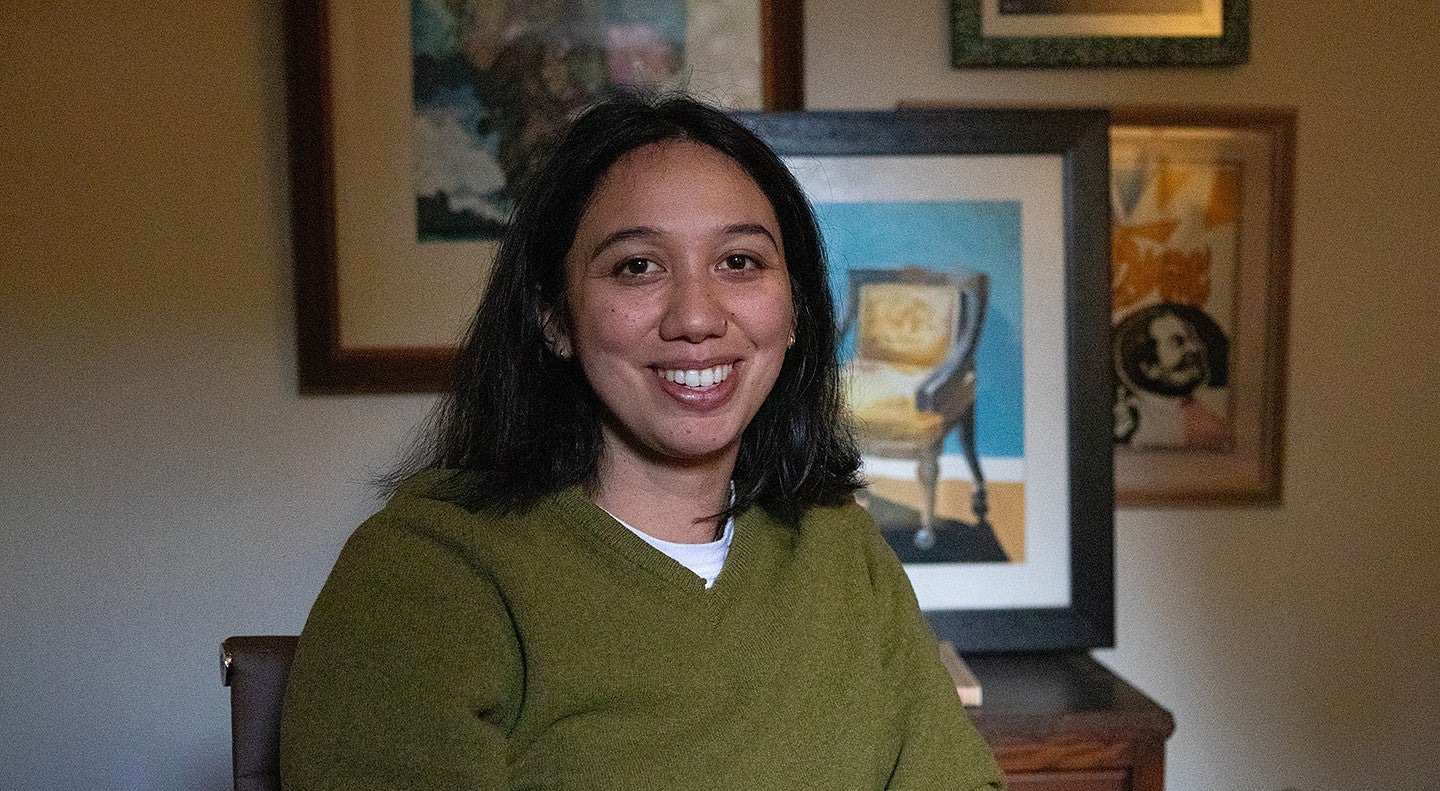
Creating the art and stories of life
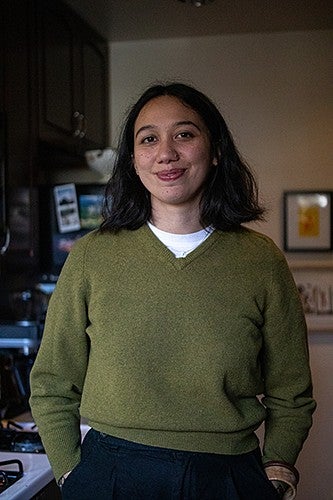
CHC Class: 2018
Current job: Lead for motion design at Zendesk
Living in: Oakland, California
Song on repeat: “Tao” by Sampaguita
Advice for CHC students: Pursue what naturally interests you. Find the thing you could research all day long, talk for hours about, and continues to inspire and surprise you. Your thesis and your life will become much more fun and interesting if you're aiming towards what you're passionate about.
Check out Mary's artwork on Instagram.
Before Mary Vertulfo starts her work in the mornings, she spends the time getting inspired. Scrolling through the social media of artists she admires, reading a passage from her favorite book or listening to the latest hit, Vertulfo’s goal is to “warm up” her brain with things that drive her to create. Later in the day, she’ll meet virtually with photographers, web designers, and other creatives on the upcoming project or assignment to collaborate on how to make their work “fun” and “imaginative.”
Vertulfo, a 2018 Clark Honors College graduate who majored in fine arts and technology, is the lead for motion design at Zendesk – a San Francisco-based company that builds software for customer engagement for businesses around the world.
As she describes it, she works on shaping the brand identity of the company. She does what she describes as the behind the scenes work to make things happen.
“My job has changed to be more about storytelling and helping teams think about their work in ways that make the process more fun,” she says. “One cool thing about art is you have so much control in so much of the process and that translates really well into the work that I do now.”
Vertulfo has spent much of her art and design career working with a variety of A-list clients, including Nike and the indie pop-band Japanese Breakfast. She credits her time in the Honors College as part of why she has been successful in her career.
“The structure of that education really prepares students to think critically about the content of the work, as well as the quality of the finished product,” she says. “I think the Honors College faculty were trained to recognize and taught to recognize that when (they) see a student who is passionate to help them recognize their full potential.”

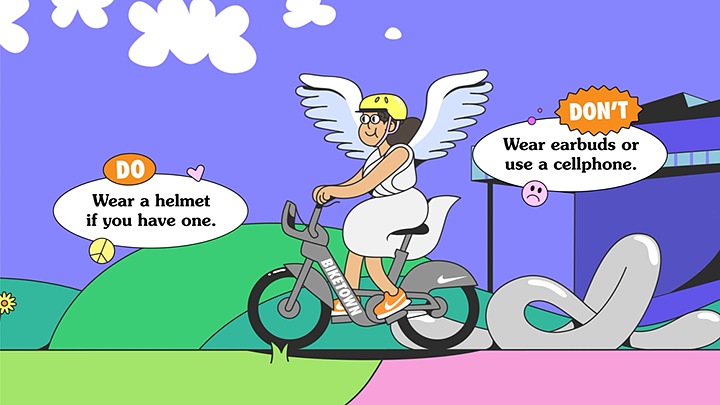
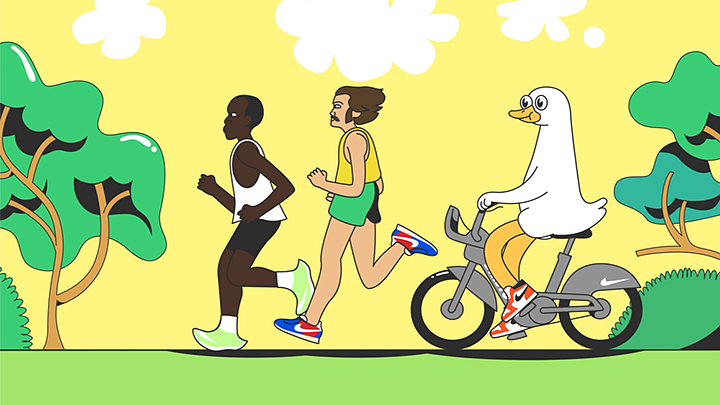
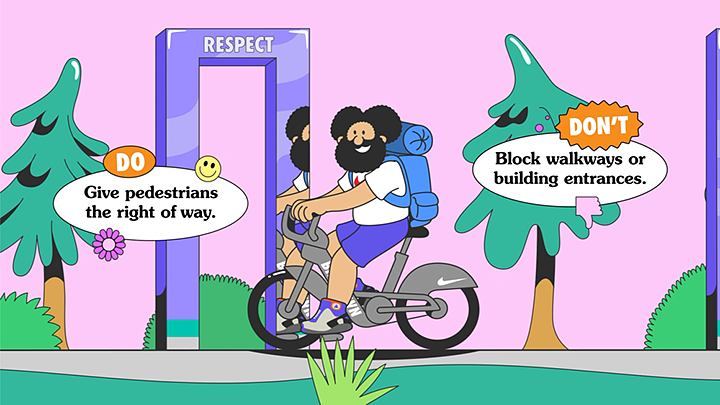
During her time at Hovercraft Studio, Vertulfo created safety videos for the new electric bikes on the Nike Campus. A lifelong bicyclist, she felt fortunate to be able to work on a project that was "high-profile" that also aligned with her interests. (Artwork courtesy of Mary Vertulfo)
From imitation to creation
Vertulfo grew up in Eugene – she calls the “10 square blocks” around the University of Oregon campus home – and she says becoming an artist was an easy task.
“It’s a place that encourages you to be so creative and do your own things,” she says. “To see so many people who were off the beaten path, who were loved and supported by the community, was really important for me.”
As a kid, Vertulfo woke up early to watch the Toyko Mew Mew anime series that’s based on a popular comic book. The bright colors, too-long fight scenes that were one second away from being uncomfortable, and the teenage girls running around cities fighting monsters all caught her attention. She still has a 10-year-old copy of the first comic on her bookshelf and fondly recalls how it inspired her to create.
“I was just trying to imitate the art that I liked,” she says. “There is something so deeply addictive about American and Japanese cartoons, and I wanted to ... make things that were fun and impressive to people.”
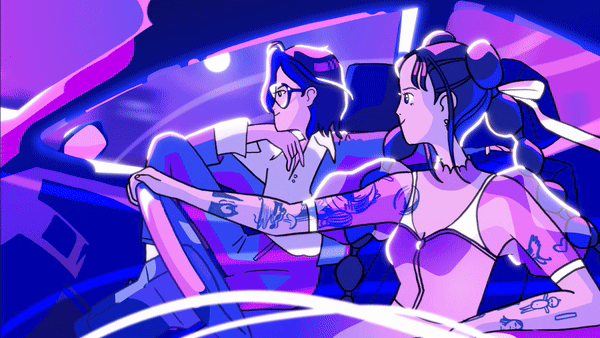
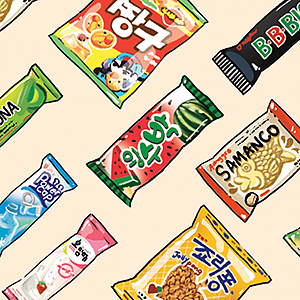
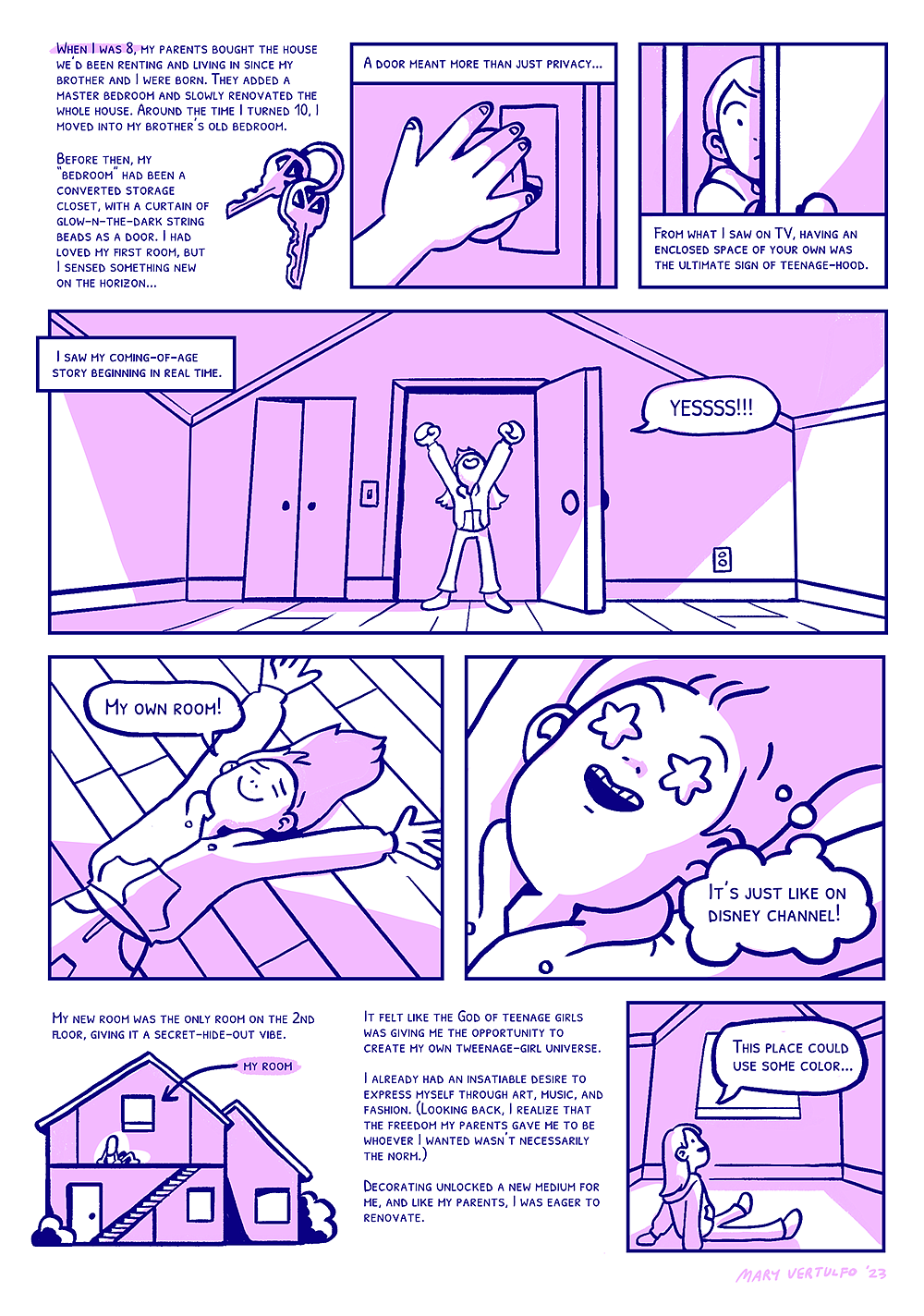
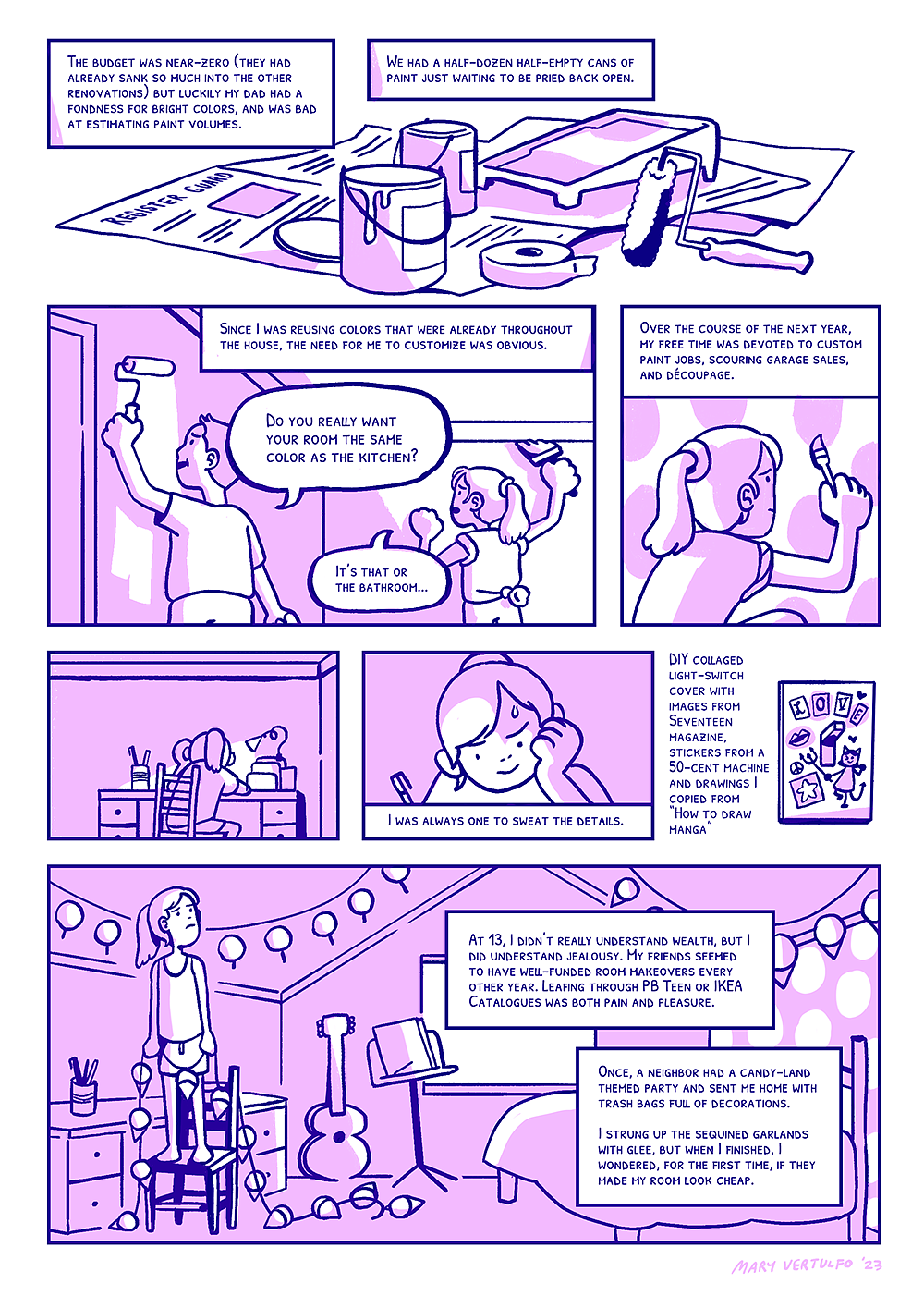
Vertulfo started drawing characters as a kid, building her own universe and identity through a comic about her childhood bedroom.
Vertulfo remembers her parents would bring home pounds of recycled paper from their jobs so she could draw. “They saw that having a child with any passion is really a gift,” she recalls.
Vertulfo attended South Eugene High School and quickly got involved with school and community theater programs. She did her work behind the scenes, recalling the first time she led a project with a team of moms to create 50 giant paper mâché animal masks for the play, “Children of Eden.”
“It was my first time being exposed to the way different media could come together and make something that could be emotionally impactful,” she says. “I think that was what made me really understand the value of my skills.”
Despite the creative support she found in Eugene, Vertulfo also struggled with understanding her mixed Filipino and White identity.
“I grew up and was taught here that racism was done, that it didn’t really exist anymore, that it was like in the past and I knew from experience that it wasn’t true,” she says. “Those kinds of things have compounding interest on the minds of young people of color.”
Vertulfo used her love for art as a medium for how she shared her life experiences.
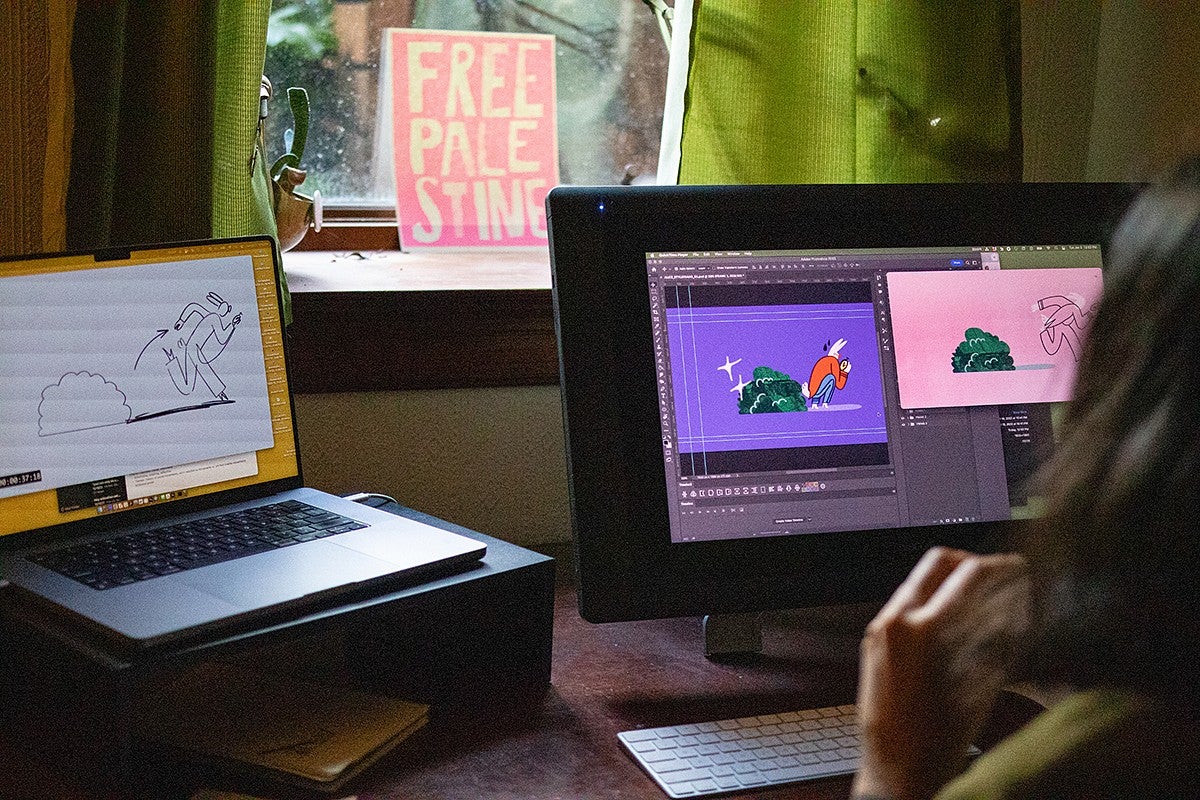

Drawing connections
In college, Vertulfo didn’t expect to be as challenged. She figured that she would skate by, considering her success in high school.
“I needed that extra little bit of push,” she says, which she found in the Honors College.
“I really felt supported by my professors ... because I was very passionate about my own areas of interest, and we were able to connect over our shared passions and the intersections of our own scholarship,” Vertulfo says.

Louise Bishop, now an emerita associate professor of literature, was one of the first CHC faculty Vertulfo met at new student orientation. “I loved it because Mary was a local. She was right from Eugene, so she knew her way around,” Bishop says. “I could tell she had a very good artistic side.”
Bishop encouraged Vertulfo to go with her on a CHC study abroad trip to Oxford, where she became more curious about art and research.
“Baroque art and architecture represent a very religious political time in Europe’s artistic history, so that really got me thinking about my own work and what is possible with artwork,” Vertulfo says.
After the trip, Vertulfo began to understand the connection between conceptual artwork and research. She “wanted to join the ranks of artists who used art as a critique and reflection on the times.”
Vertulfo also impacted how UO’s College of Design connected with the Honors College. Bishop recalls how she helped build bridges from within the art and technology program.
“She was right at the forefront of having projects in that field with the faculty – they learned about the honors college from Mary,” Bishop says. “In some ways she was helping forge the path.”
Vertulfo’s CHC thesis advisor, Associate Professor Rick Silva of the School of Art + Design, was an important figure in Vertulfo’s journey to understand how she wanted to share stories.
While working on her Honors College thesis, Vertulfo created a new project for one of his classes titled “Sit, Play Havoc, Let Slip” about a dog’s secret life.
“It had a much, much shorter turnaround time, but she still wrote and performed the song and did all the animation, experimenting with a whole new set of animating skills in the process,” Silva recalls.
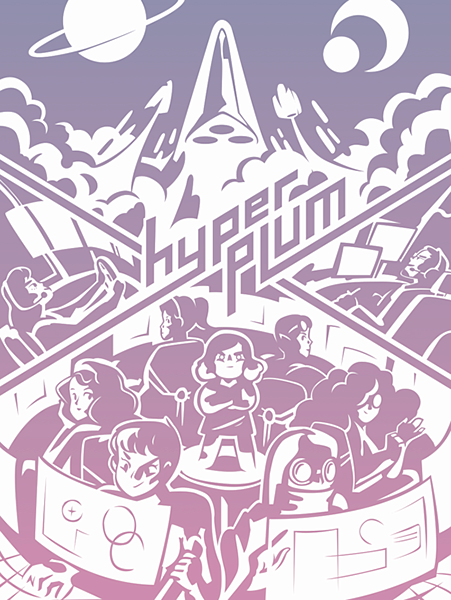
Years later, Silva continues to show “Sit, Play Havoc, Let Slip” to his advanced animation students as “an example of a brilliant student animation project.”
Vertulfo decided to get a Bachelor of Fine Arts degree, a five-year program. She spent her final year at UO working as a part of an artist collective called “HyperPlum,” to create a series of art exhibitions that intertwined intersectional backgrounds with various themed artwork.
The group’s name was inspired by the rising popularity of K-pop music, mainstream popular music that originates from South Korea.
The racial, ethnic, cultural, and familial diversity of the group inspired conversations about identity and expression through art. They worked to understand the approaches each artist took and found ways to establish common ground to express themselves. “It was such a fruitful year for all of us,” she recalls.
For her Honors College thesis, Vertulfo researched how different women’s animation inspires “change and social critique” in the male-dominated medium and genre. She connected the historical research to her own identity and work as a woman in animation.
Vertulfo won the CHC Creative Thesis Award and her mentorship under Silva connected her to the start of her professional career at the Legwork Studio in Denver.
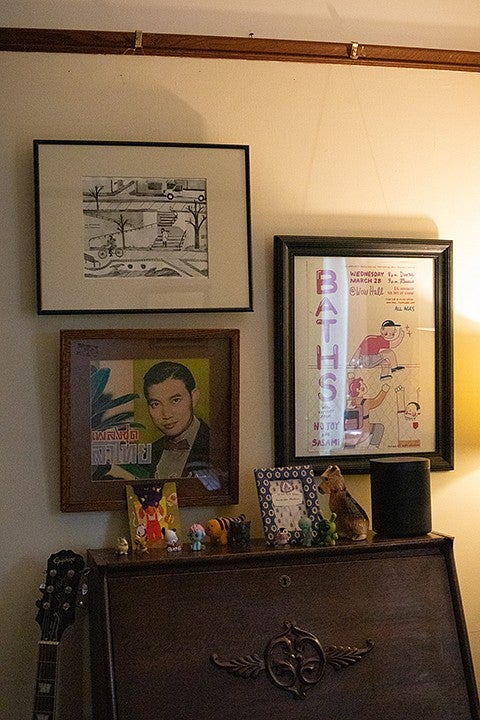
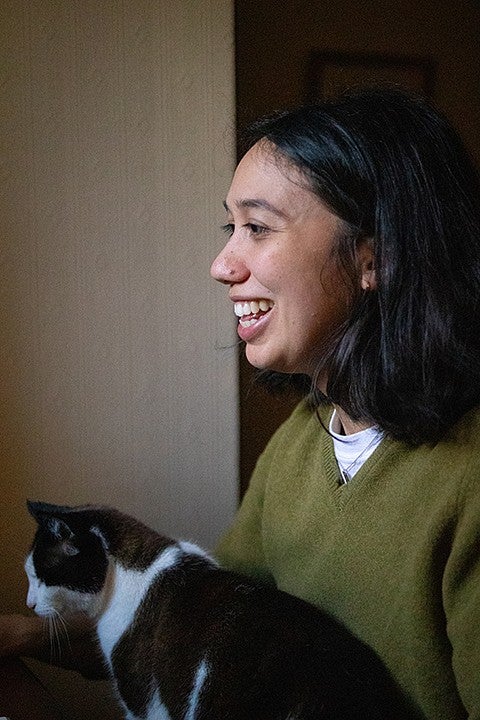
The bigger picture
Since her graduation six years ago, Vertulfo feels confident about navigating the animation industry. In her home office, she is surrounded by a collection of artwork from people she admires, as well as many pieces from different points of her creative career.
“It reminds me that I can get inspired by different things and that I’ve been inspired in other points in my life,” she says.
“[Making theatre props] was my first time being exposed to the way different media could come together and make something that could be emotionally impactful. I think that was what made me really understand the value of my skills.”
An avid biker, a lifelong singer, and a volunteer in her community, Vertulfo finds ways to stay busy outside of work. Currently, she is working on a short film about living with parents and the little things that pile up over time called “Bagay-bagay.”
Looking toward the future, she wants to work in education or the arts with students and young artists. She sees a future of sharing stories that foster community and conversation, and give people access to the opportunity for expansive “self-expression and cultural preservation.”
“People want to make work about the things they are passionate about, and the work you put out into the world is a reflection of who you are,” she says. “Everything I make says something about who I am and what I value.”
